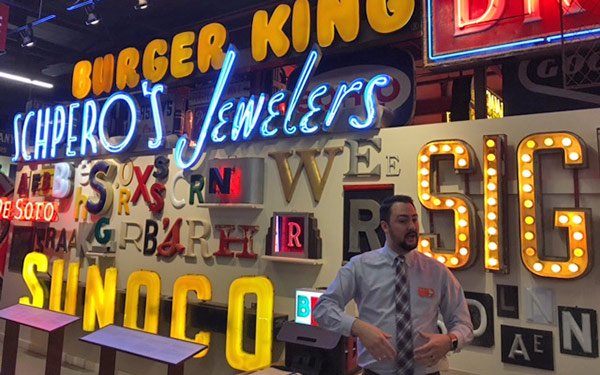Cincinnati's Sign Museum Courts Agencies
- by Larissa Faw , March 10, 2017

Holiday Inn. Big Boy. McDonald's. The American Sign Museum in Cincinnati, OH is the one place where visitors can experience iconic advertisements from the late nineteenth century to the 1970s.
For the past few years, the largest sign museum in the U.S. has grown to include more than 200 signs chronicling 100 years of advertising history. "It's a nostalgia trip," says guest services manager Kevin Wallace. "We want to preserve historic signs and promote the sign industry's contributions to commerce, culture and the American landscape."
Now the museum is shifting its focus to advertising agencies and soliciting their support and participation. The museum wants agencies to host events and use its facilities for corporate retreats. The museum's organizers feel that agencies can also help develop educational programs and lessons using its exhibits. And it wants agencies to use its channels to help spread the word about the role advertisements have played in American culture.
advertisement
advertisement
There are many unique one-of-a-kind signs on display. Some of the exhibit’s highlights include the 1963 single-arch McDonald's sign featuring Speedee, a cookie-shaped character who was phased out in favor of Ronald McDonald in the 1960s. There are early hand-painted signs from Kant-Rust Richfield and pre-electric signs.
There is also a rotating neon windmill from a Denver doughnut shop, Las Vegas showcards, Gulf Oil and Howard Johnson signs, and a globe-shaped plastic orb from a Compton, CA shopping center that includes a bullet hole after being caught in gang crossfire. A recreated old-fashioned downtown street features a gas station, general store, and barber shop amid numerous neon old-fashioned signs to harken back to yesteryear.
The museum also documents the transition from hand-painted to bulbs to neon signs, as well as the differing lettering formats, such as the 'Chrysler' and 'Nice for a Bank.' Furthermore, the museum displays the equipment utilized in the design and manufacture of signs. An in-house neon workshop lets visitors experience the creation of these still popular signs as well as work with outside companies to develop their own neon brands.
Hollywoodland is the one sign that got away, says Wallace. The museum wishes it could display the iconic white letters, but notes that it was purchased on eBay for $750,000 in 2012. Another key challenge is the $4,200 monthly bill to keep the lights bright and operational.
Curator Tod Swormstedt, former editor and publisher of Signs of the Times magazine, wanted to capture these stories before they were lost forever, and so he founded the museum as his self-proclaimed mid-life crisis project. He considered building the museum in Los Angeles, St. Louis, or Memphis before deciding on Cincinnati, the hometown of his Signs of the Times publication.


